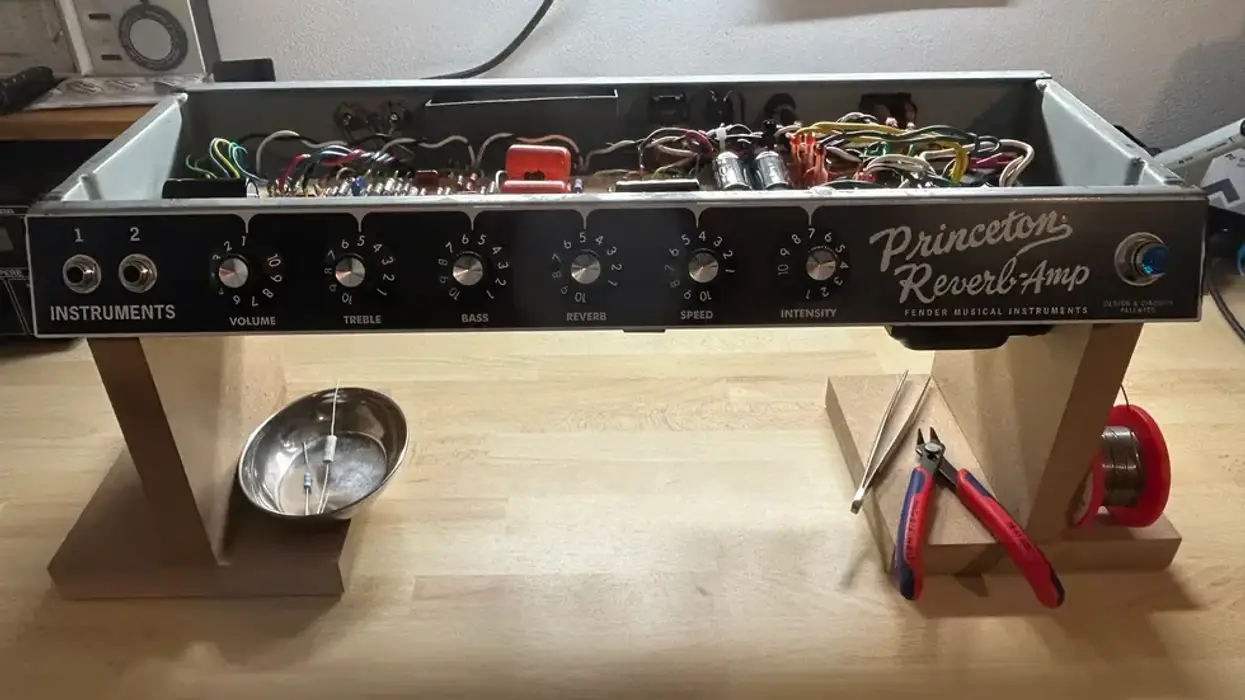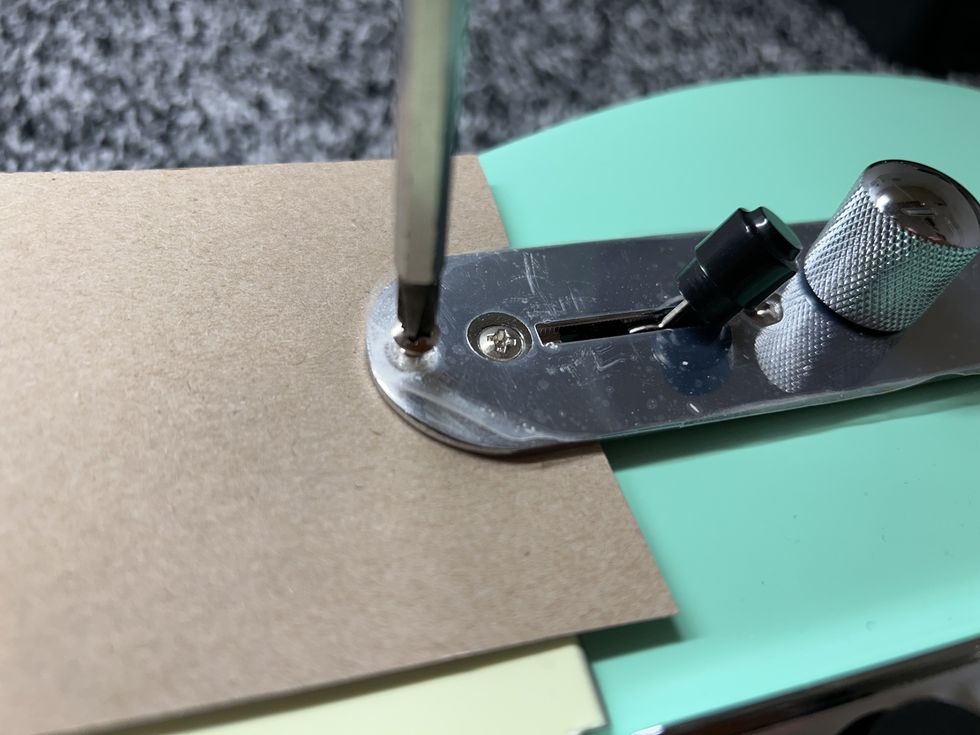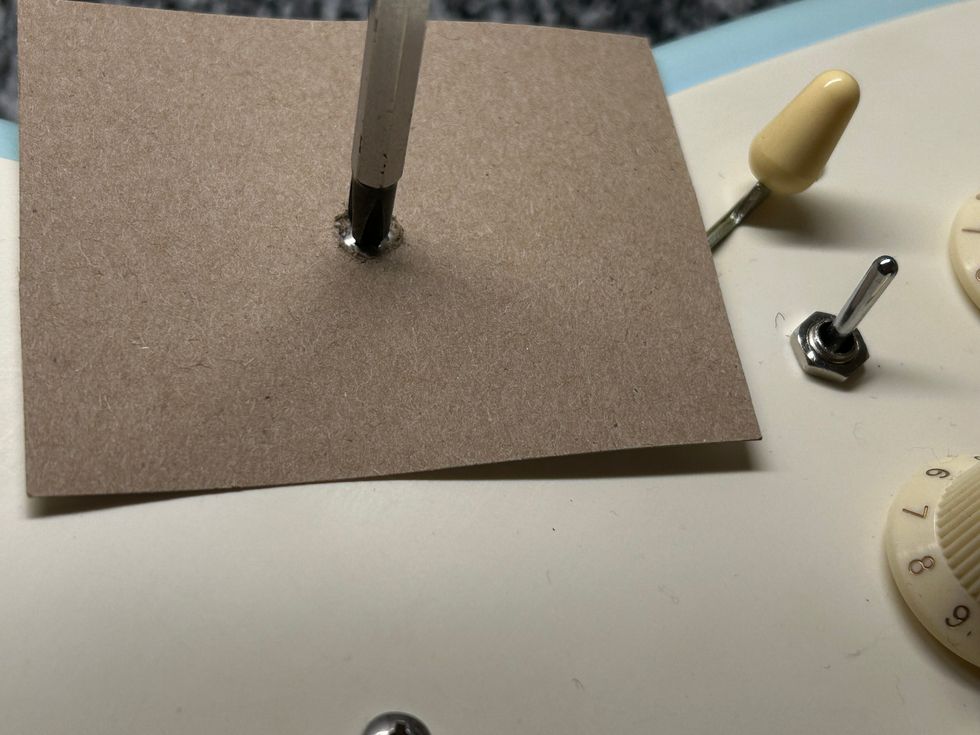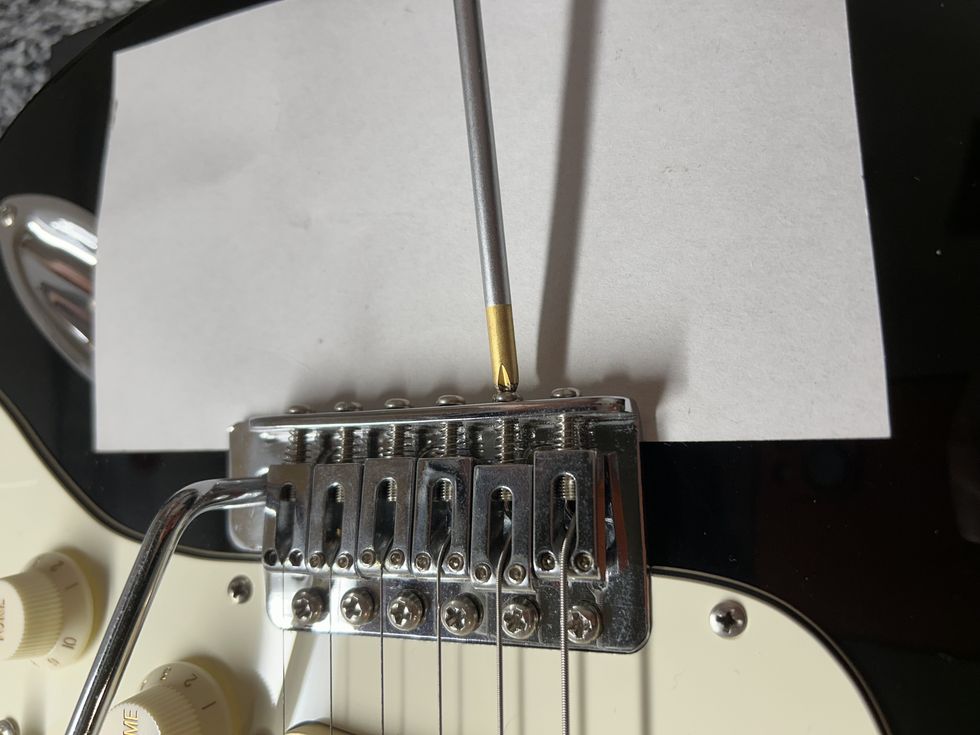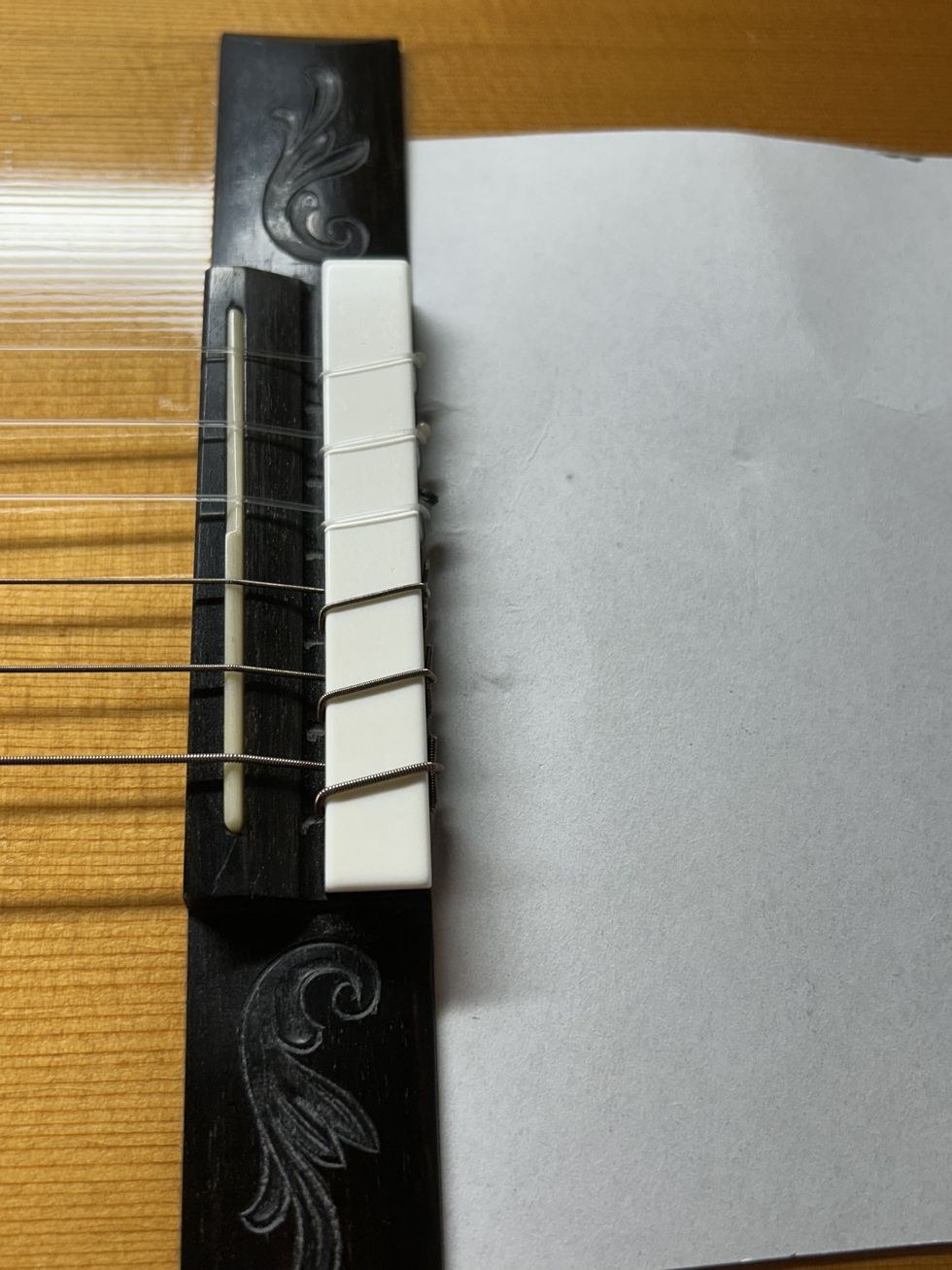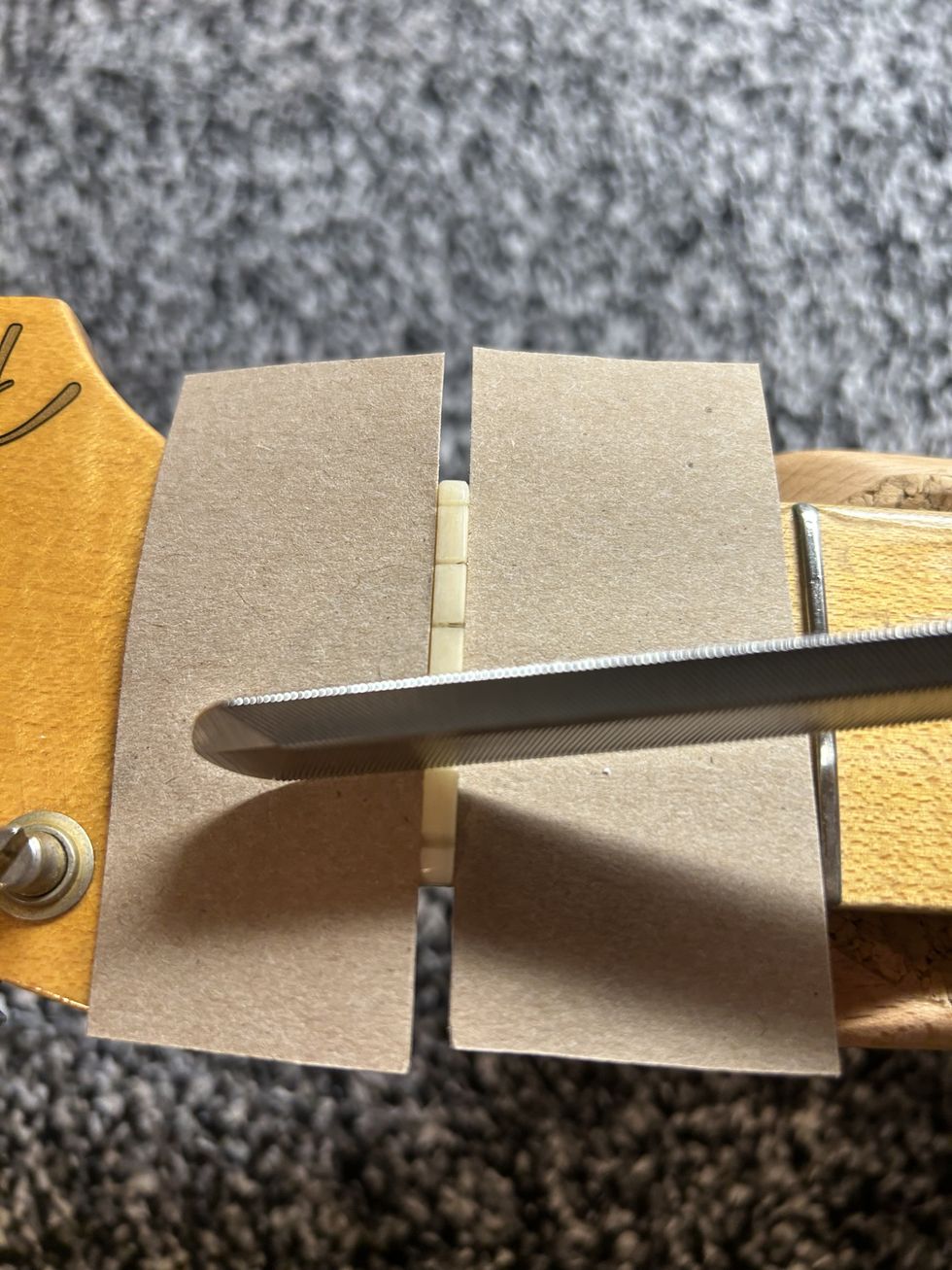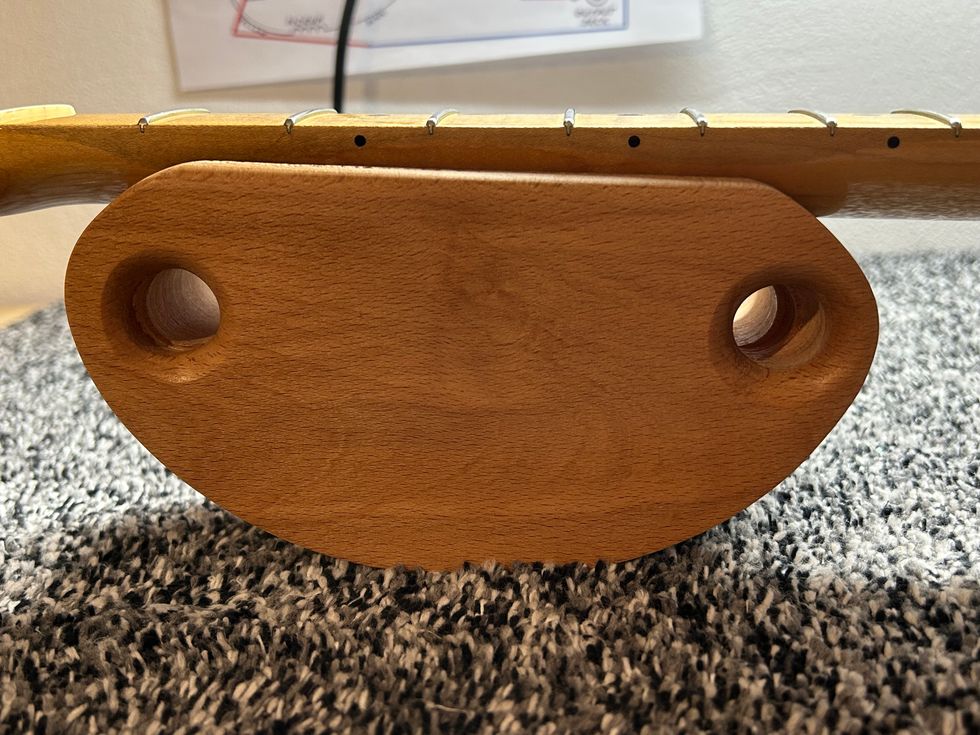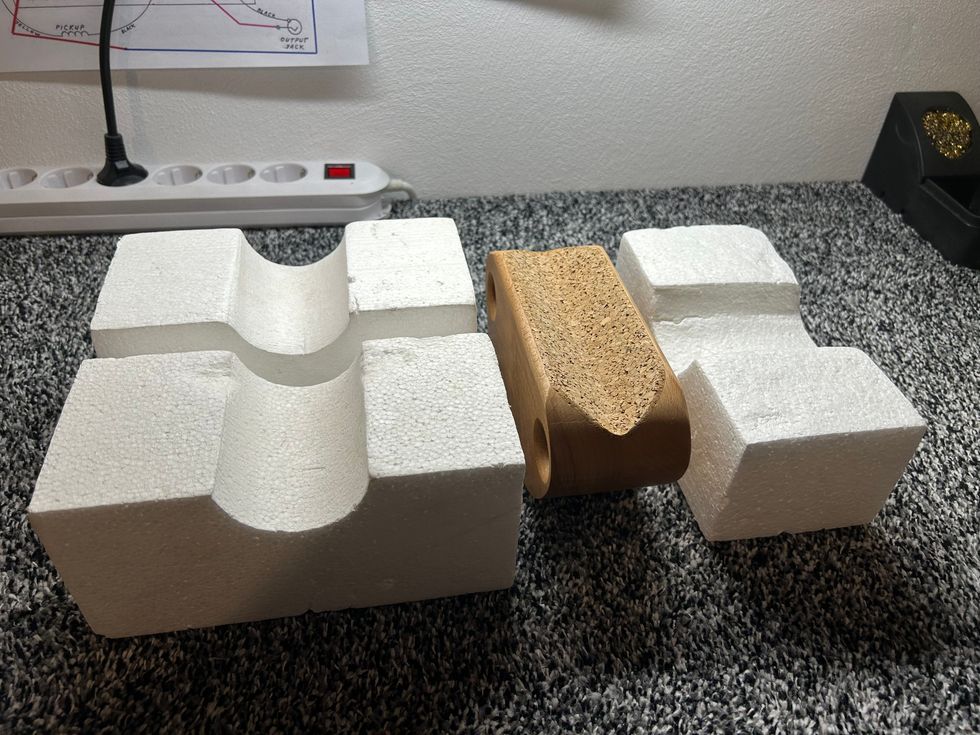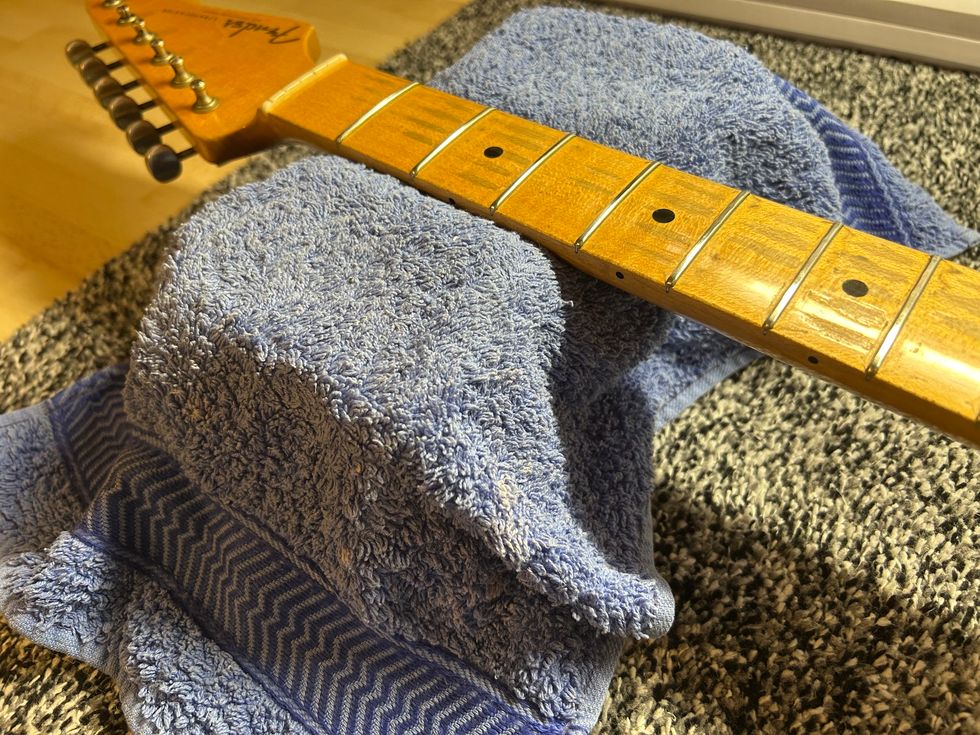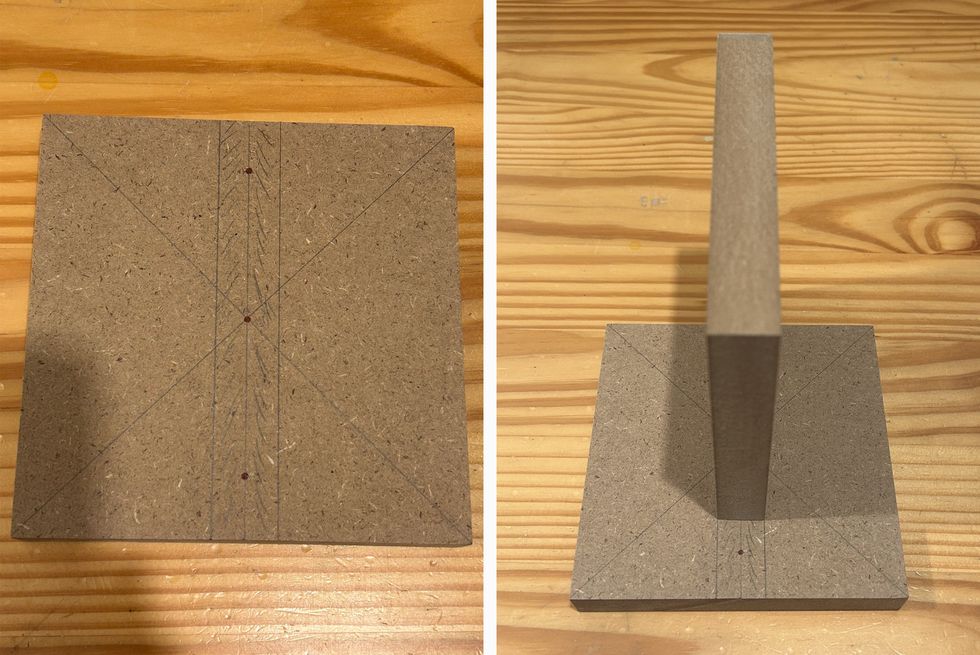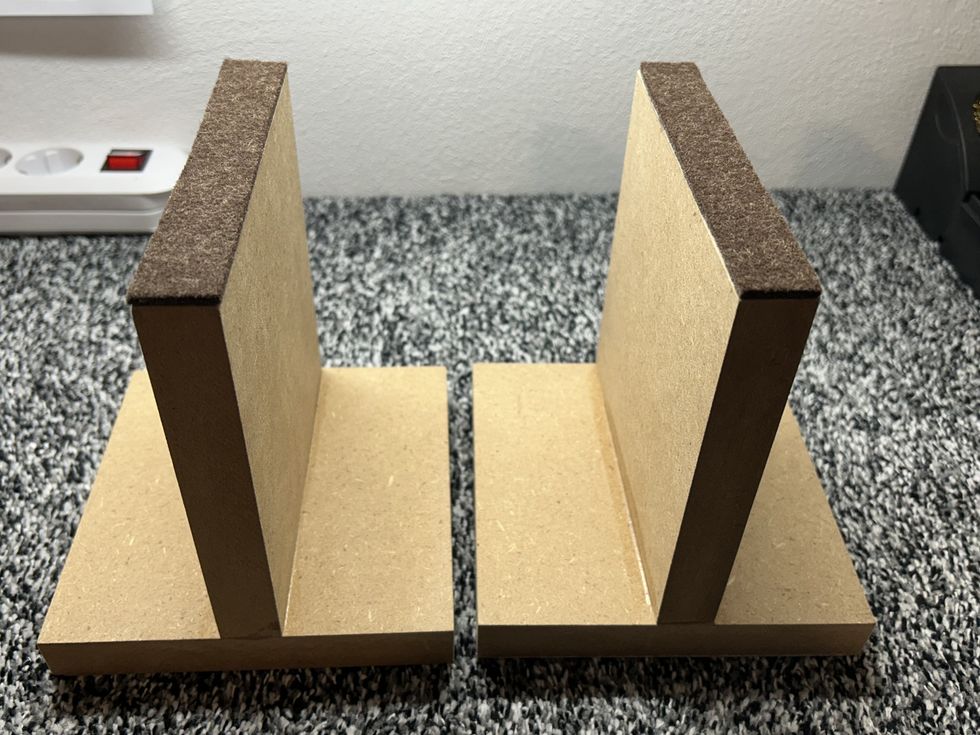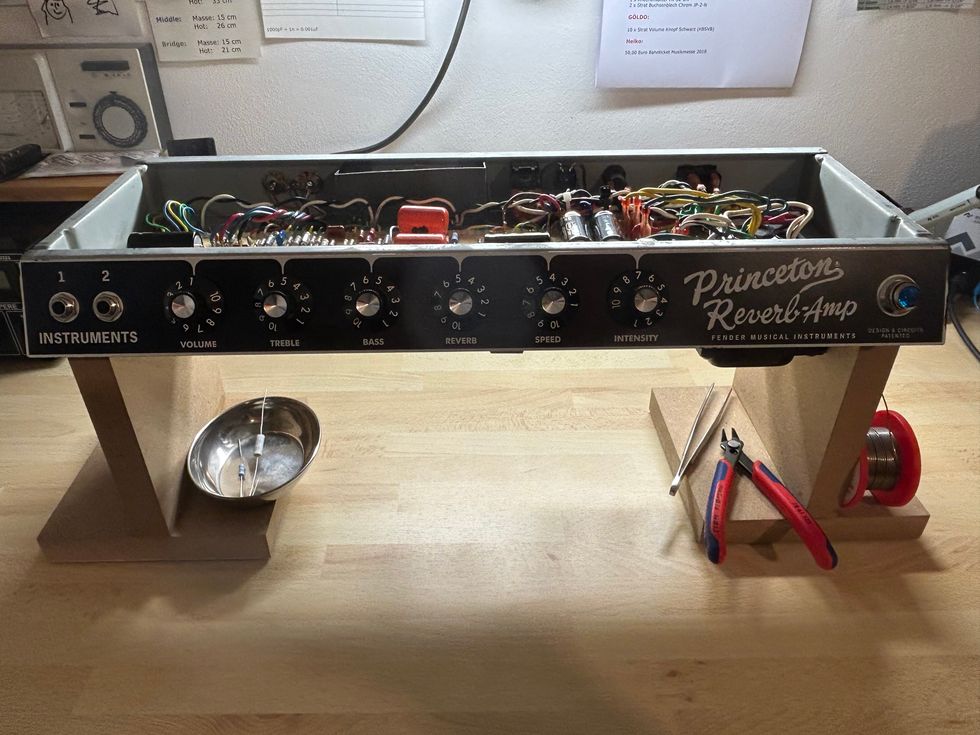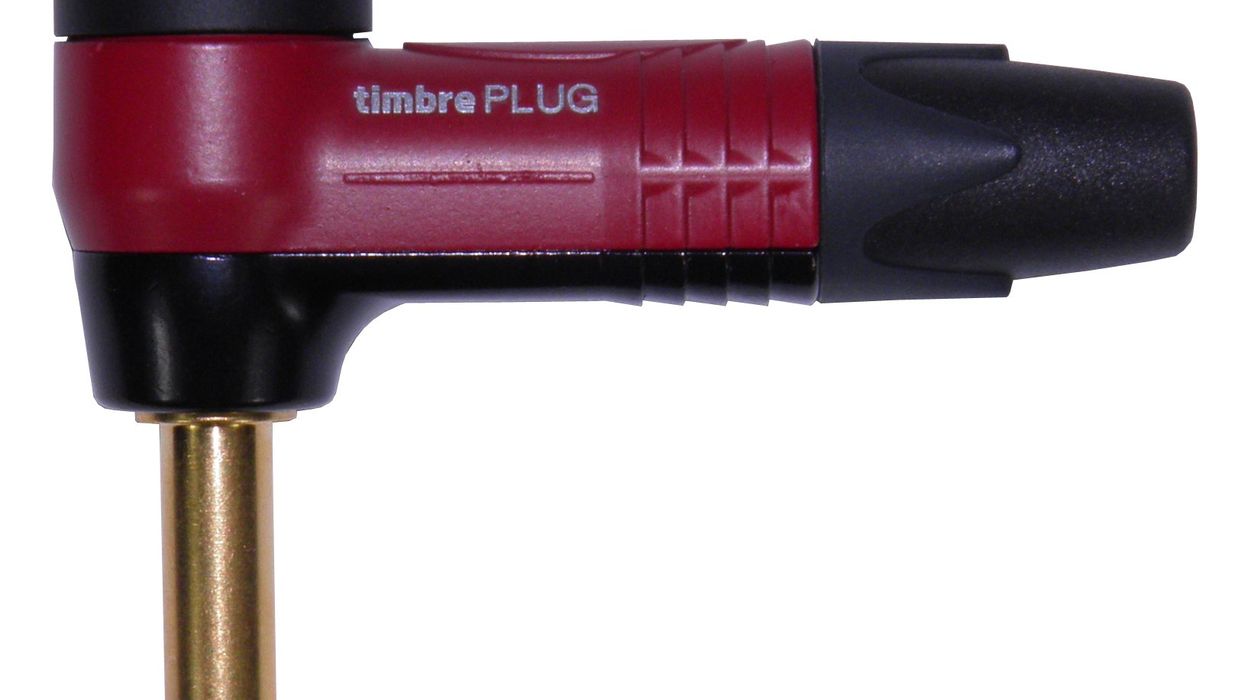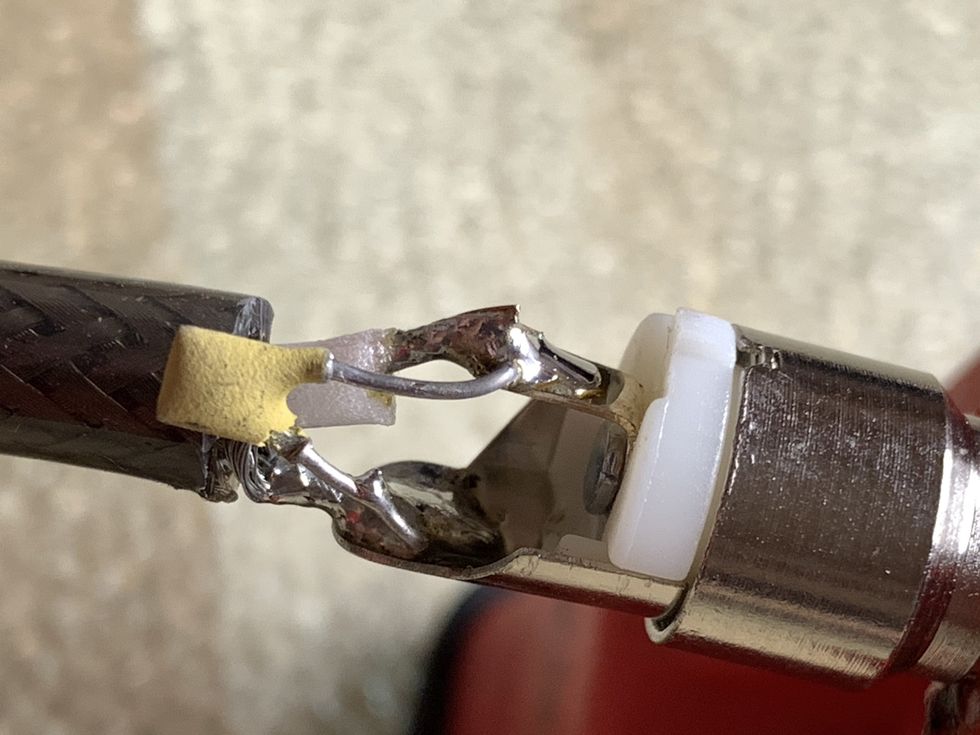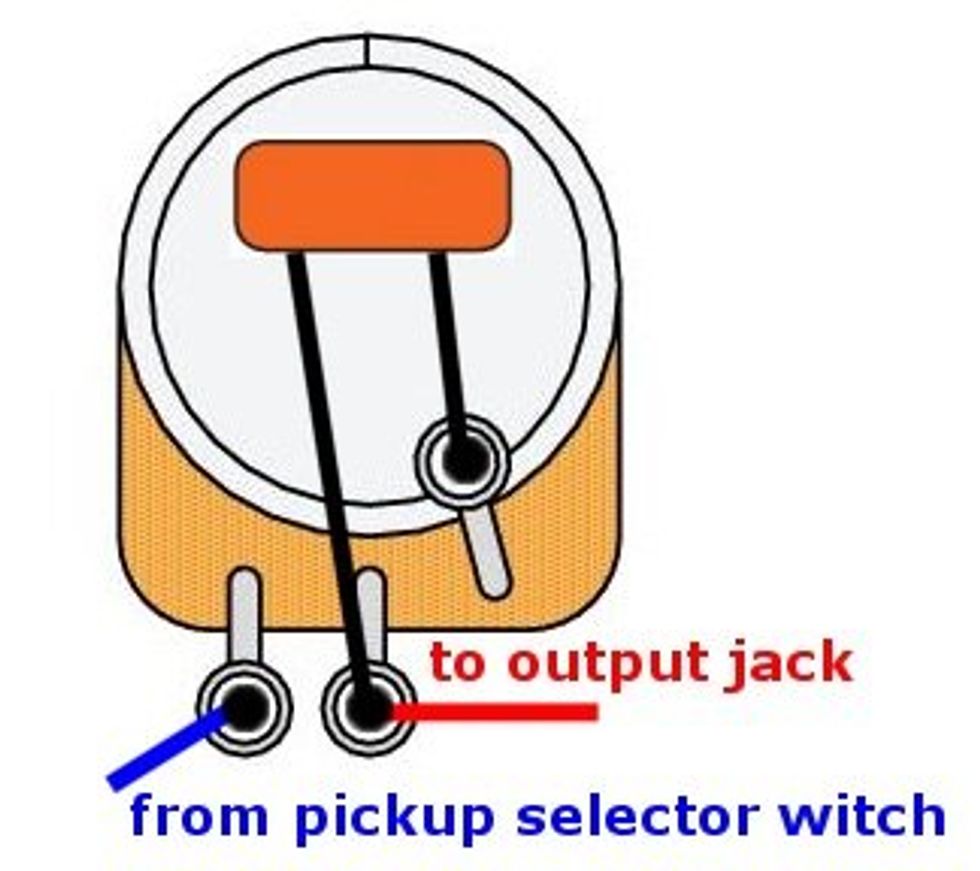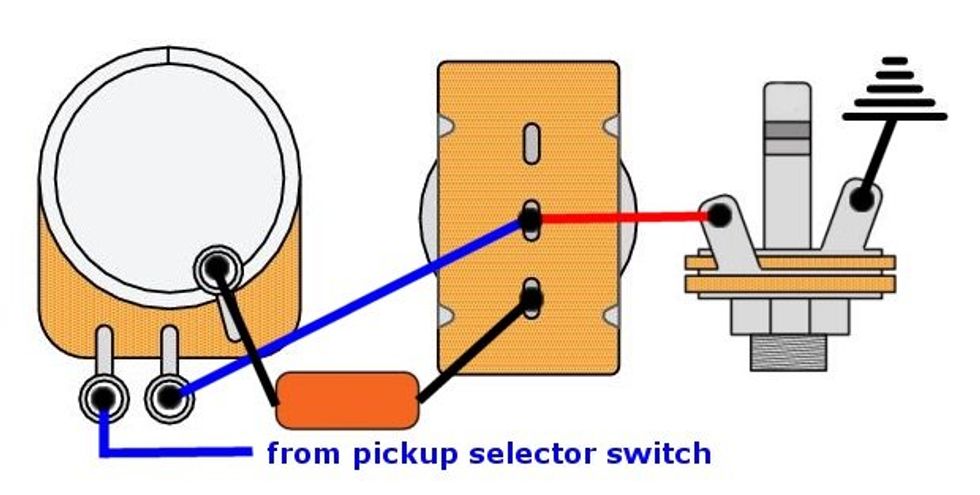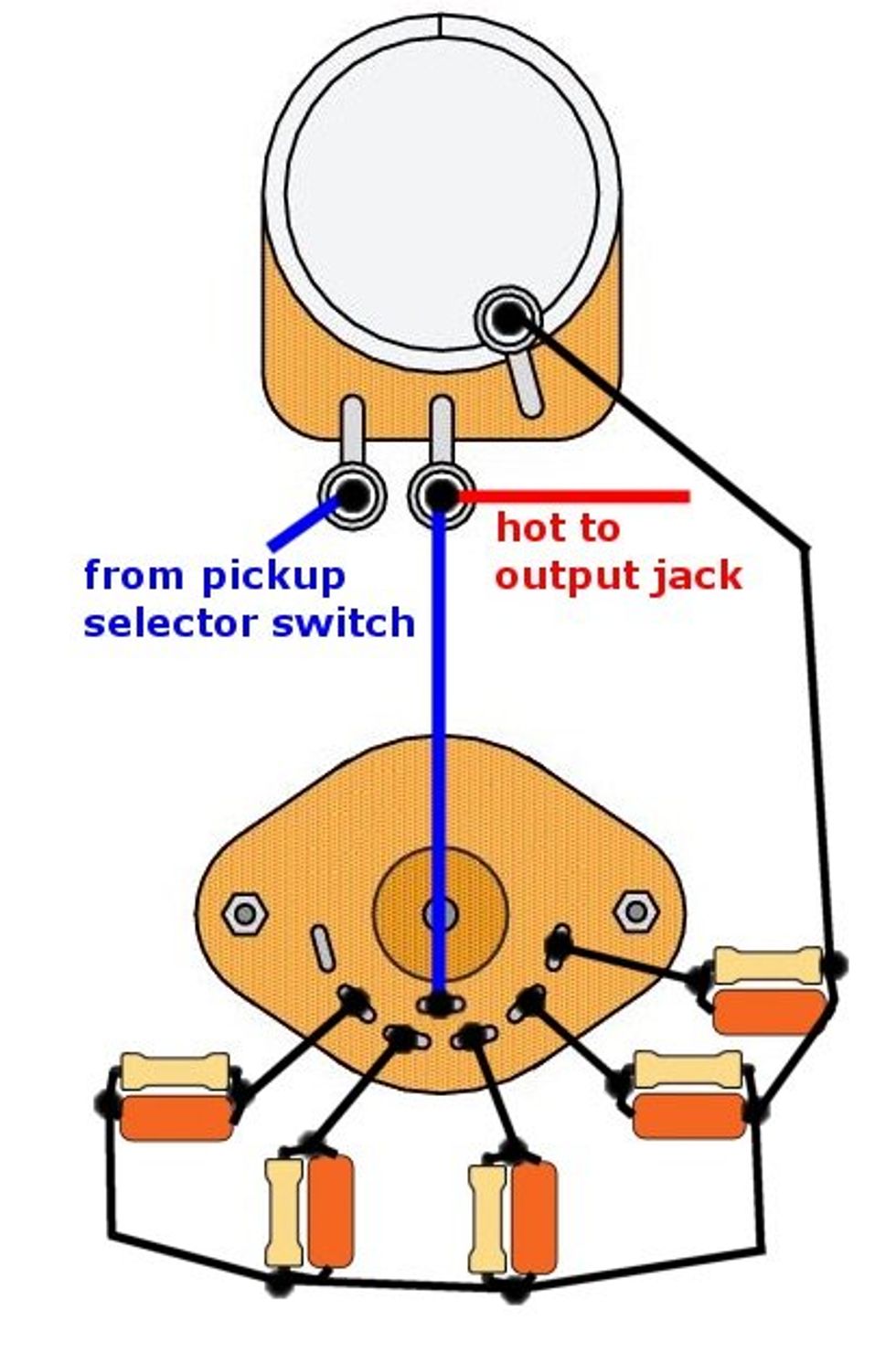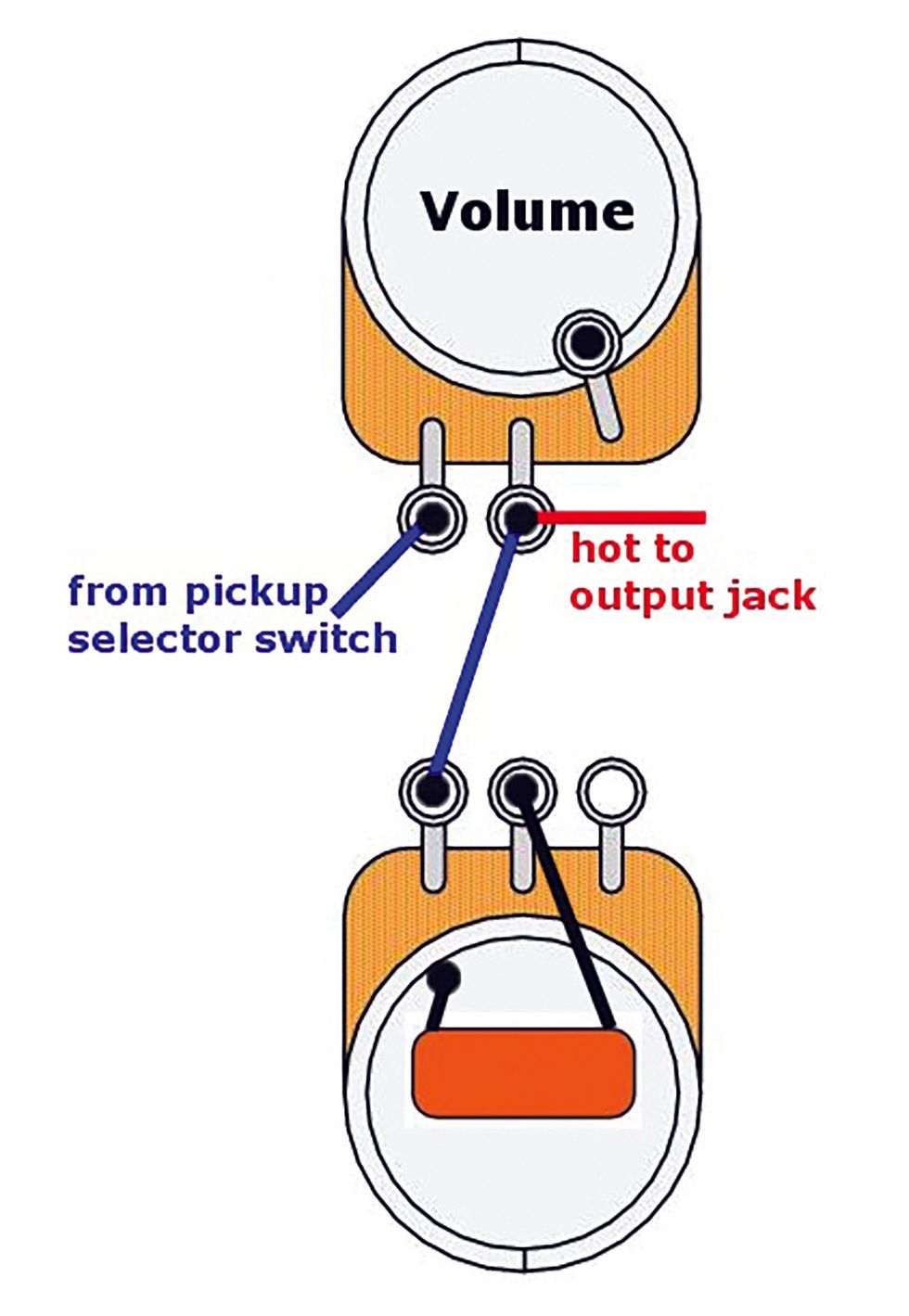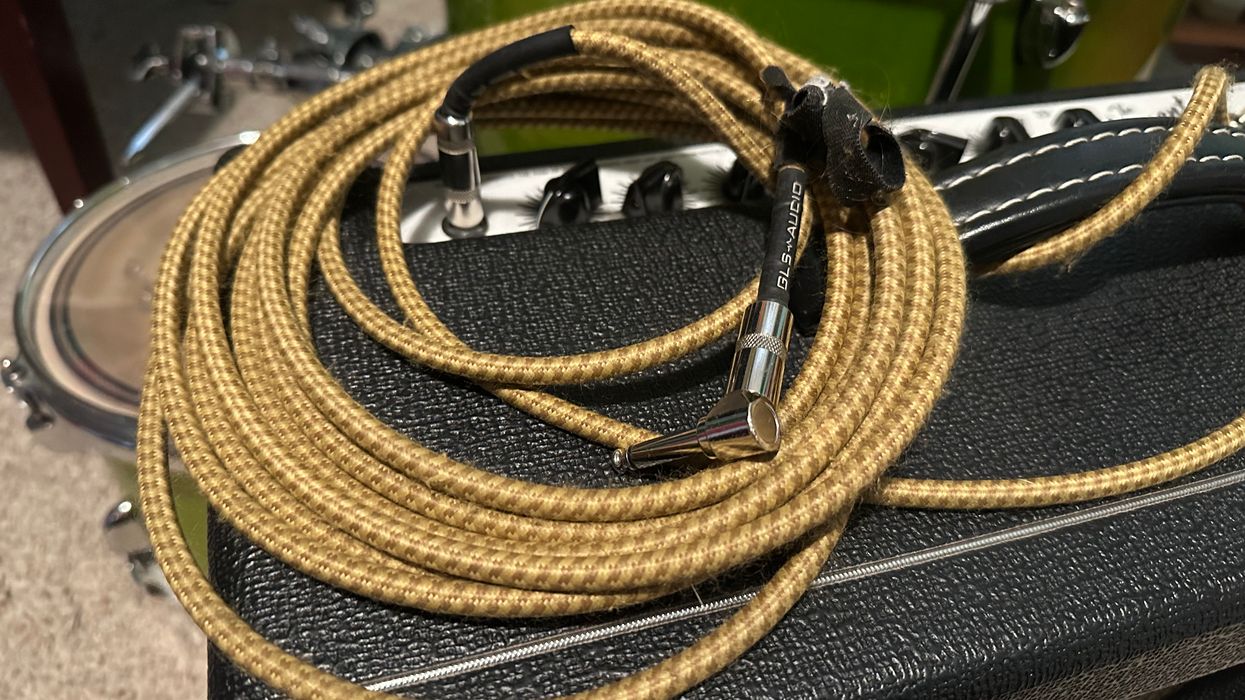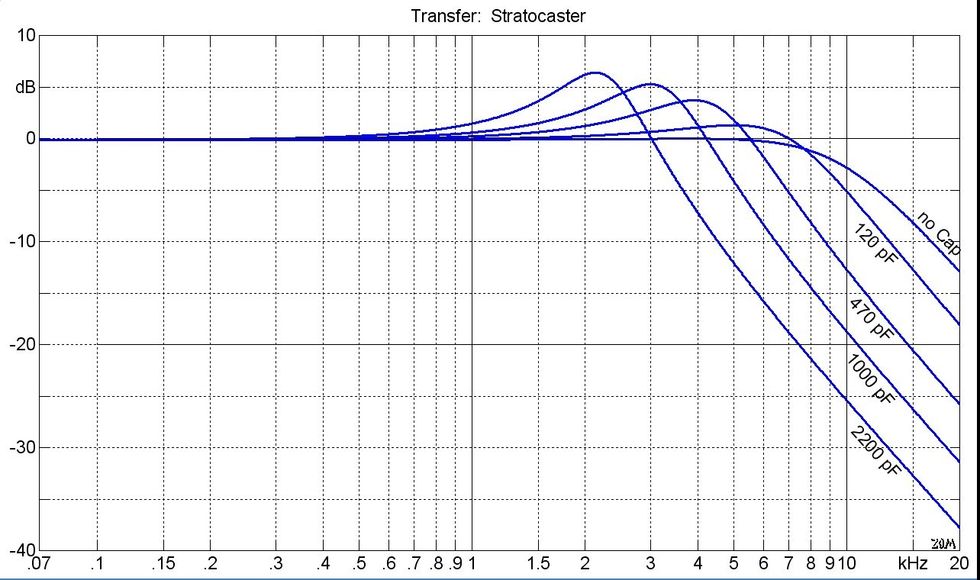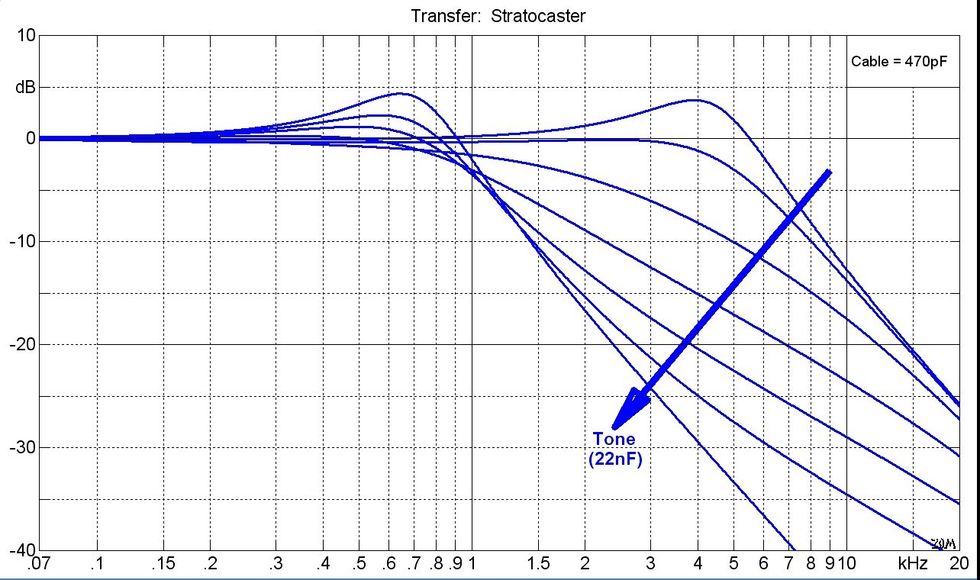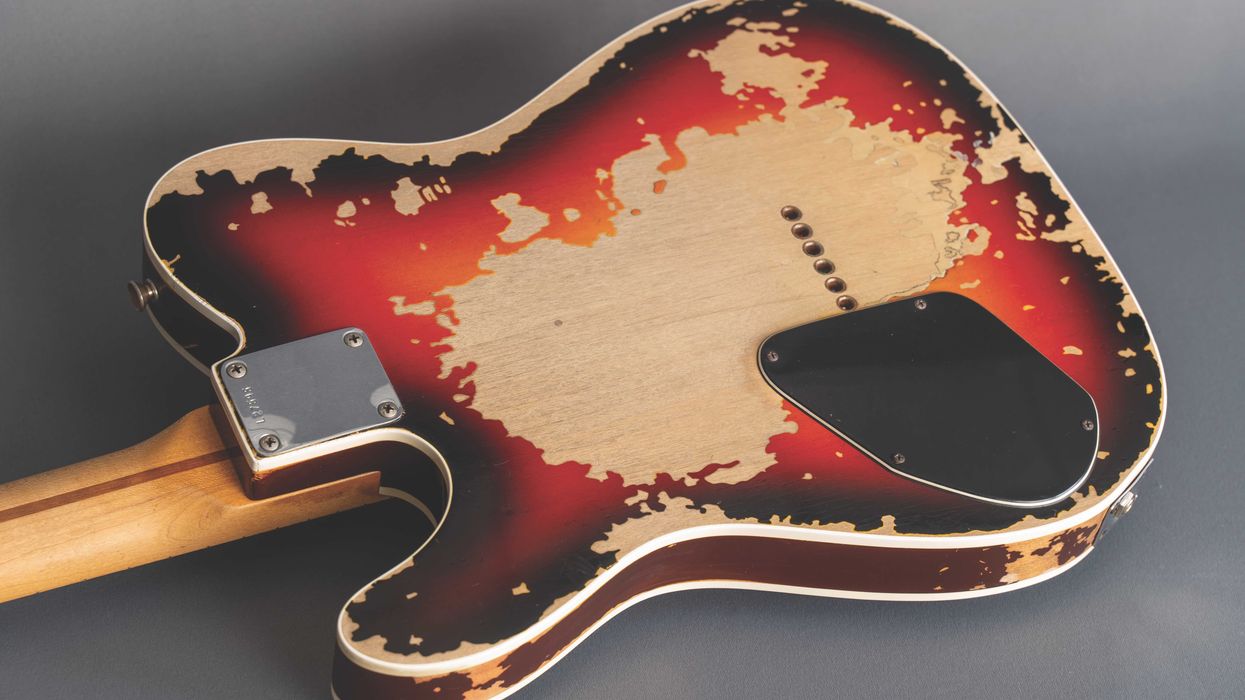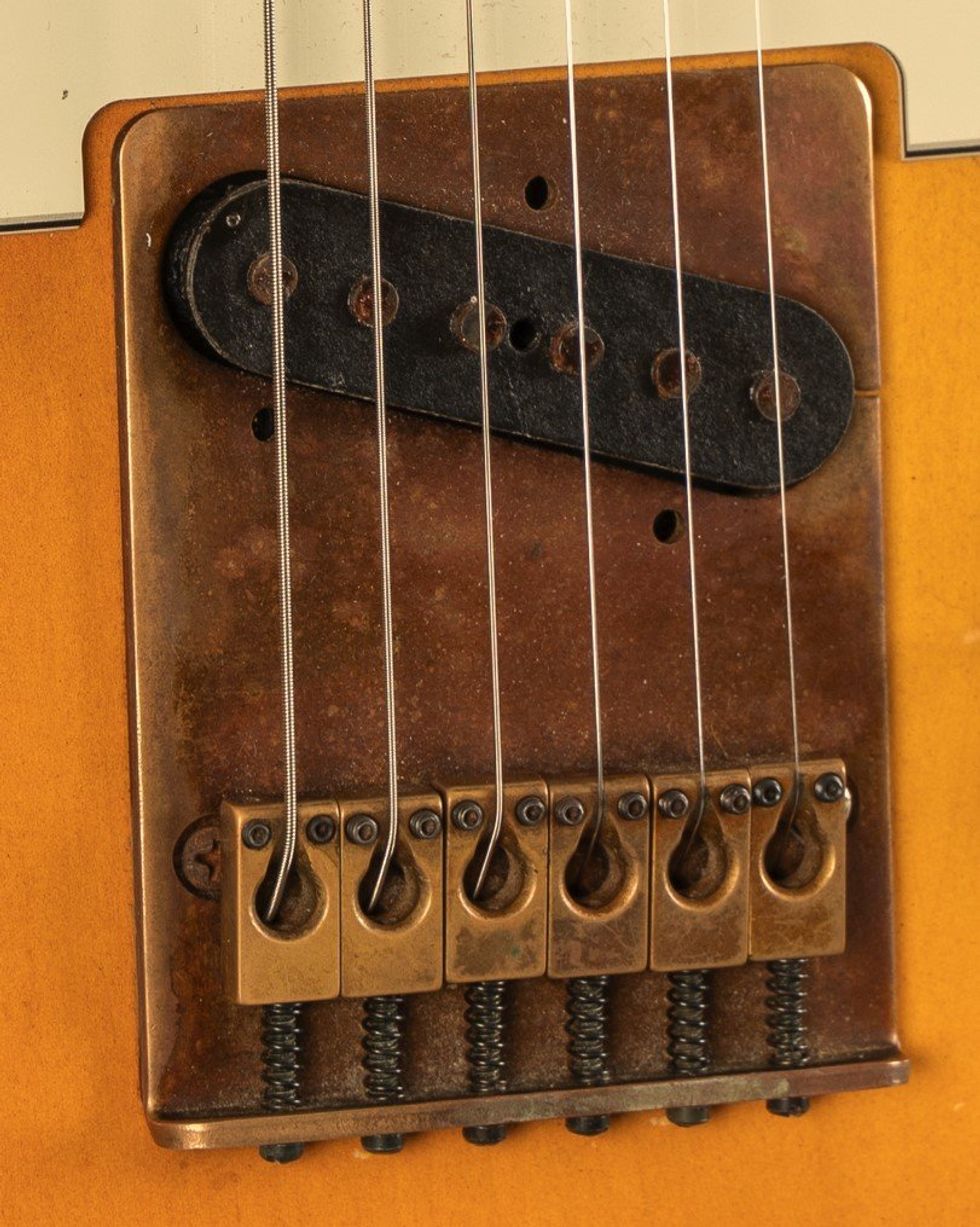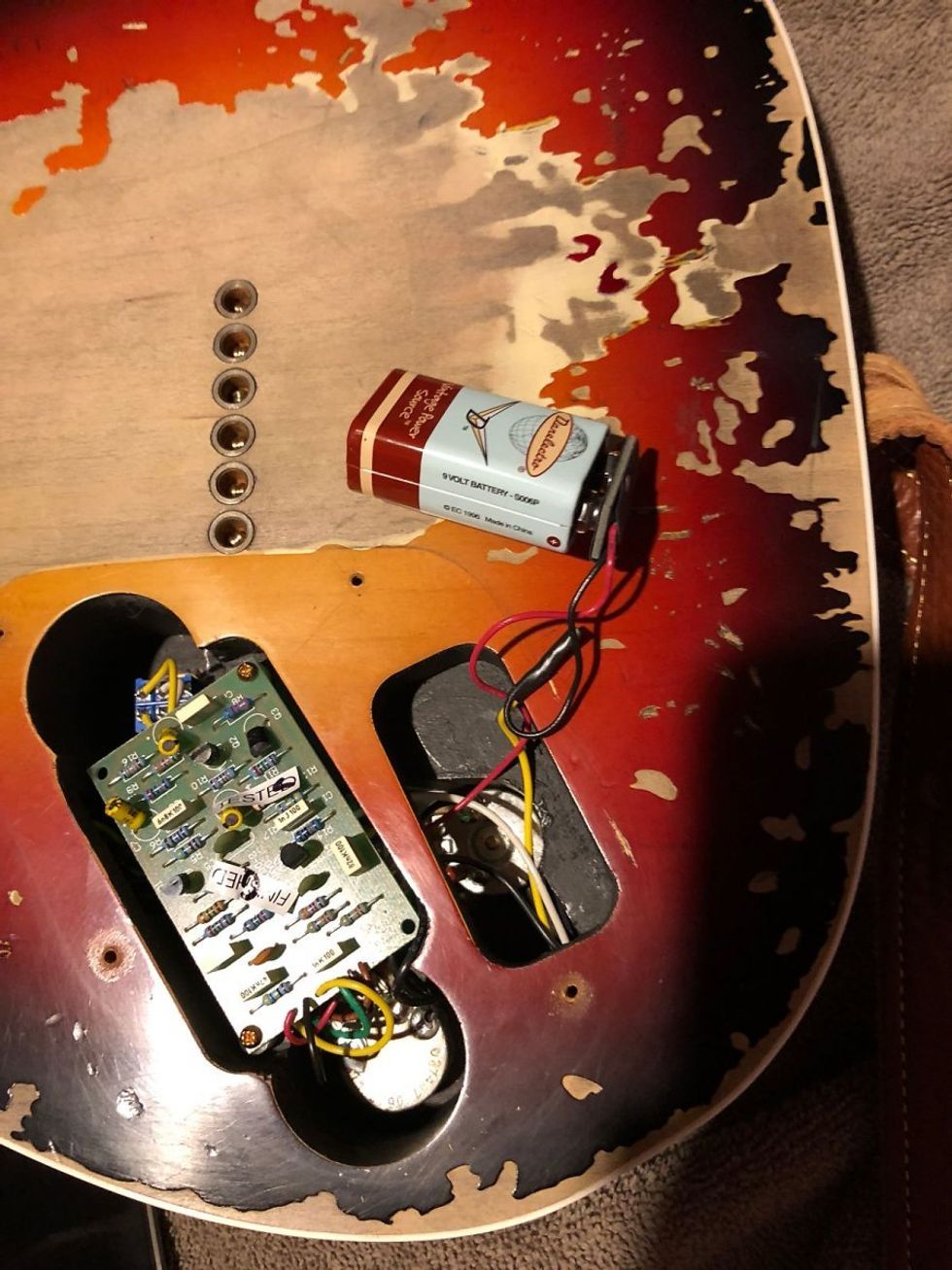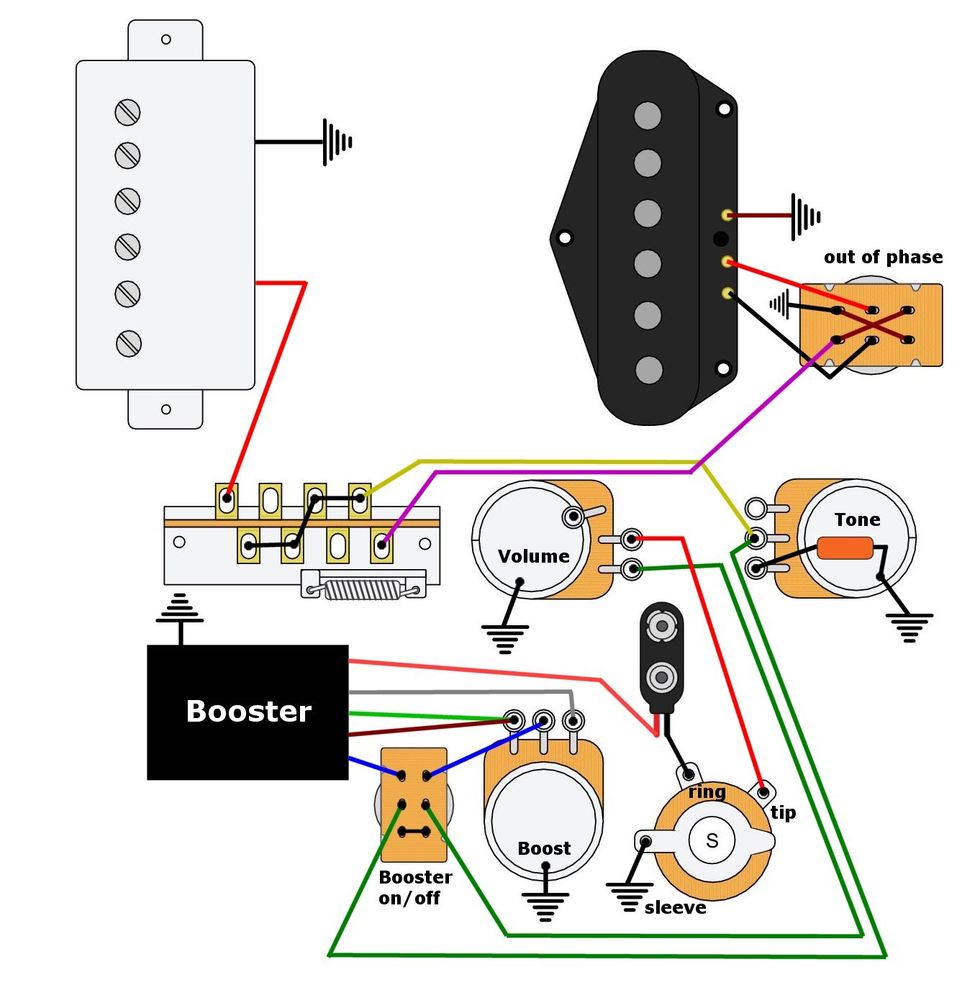Hello and welcome back to Mod Garage. In past columns, we’ve discussed improving passive tone controls by doing things like changing tone caps (smaller capacitance for a “warmth control”), using different tapers and pot resistance values, installing treble-bleed circuits, etc. But let’s take it one step further, this time converting traditional passive tone control into a kind of double-EQ control set.
In general, you can’t increase anything with passive electronics. But you can reshape the tone by de-emphasizing certain frequencies, making others more prominent. Removing highs makes lows more apparent and vice versa. In addition, the use of inductors (which is what a pickup behaves like in a guitar circuit) and capacitors will create resonant peaks and valleys (bandpass and notch), further coloring the overall tone. Some people like this interaction, while others don’t, but it is all relative and it all works at unity gain.
As is often the case when we talk about guitar innovations, Leo Fender created a passive 2-band control that is used on various models of G&L guitars—notably the S-500, Legacy, and Comanche. This is called the P.T.B. tone control, which stands for “passive treble and bass” (sometimes also referred to as “passive 2-band tone control”). G&L calls the P.T.B. feature “dramatically more effective than a standard tone control. Treble and bass frequencies can be separately cut with this exclusive passive style circuitry.”
So how does this system work? You have two tone controls in your guitar: One is for treble and the other one for bass, similar to what you can often find on guitar amps. The treble control acts like the standard tone control you know from all your electric guitars. When you turn it down, it cuts some treble, making the tone warmer. The bass control does exactly the opposite, cutting bass frequencies, which is a great option to shape the tone. The latter is sometimes referred to as “clarity control” because removing some bass will clean up the tone noticeably, bringing back some airiness and dynamics. This is an especially great feature when you play heavy distortion, giving you the ability to prevent muddiness.
Leo Fender’s original design used a 250k audio volume pot, a 500k audio treble control, and a 1M reverse audio control for bass. This was a really clever and well-chosen combination that will work with humbuckers as well as single-coil pickups. Later on, the configuration was changed to three 500k audio controls and an additional 200 pF “cap only” treble-bleed circuit between the input and output of the volume pot. I think the configuration changed because of economic reasons, but also maybe because reverse audio pots are easily available but usually not always in guitar-friendly dimensions. Anyway, it’s up to you what configuration you want to use, and there is no law against creating a custom one, like 250k volume + 2x 500k for P.T.B., which is cool for single-coil equipped guitars.
”This is an especially great feature when you play heavy distortion, giving you the ability to prevent muddiness.“
The original design for the tone caps was:
Treble control: 0.022 μF, which is pretty much standard even today. We’ve talked about this several times in past columns, so feel free to choose the capacitance you like best. A larger value like 0.033 μF or 0.047 μF will cut more treble, while a smaller value like 0.015 μF or 0.01 μF will cut less treble.
Bass control: 0.0022 μF (2200 pF). Don’t make a decimal error and mix this up with the 0.022 μF from the treble control. The bass cap is another field of experimentation to fine-tune your tone, but here it works in the opposite direction compared to the treble control: the smaller the cap, the greater the bass cut. So if the stock 0.0022 μF cap cuts too much bass, step up to a 0.0033 μF or even 0.0047 μF cap.
Naturally, the Stratocaster comes to mind when thinking about this mod because it has the three knobs you need and it’s easy to convert. But in general, you can add the P.T.B. to any passive guitar with at least three pots. If you want to use it in a guitar with only two pots, which is usually master volume and master tone, you can substitute the tone control with a stacked pot, which is two pots using the space of only one. In a Gibson-style guitar with four controls, it can be reconfigured to something such as two volume controls (one for each pickup) + P.T.B., so there are plenty of options.
I’ve shown the wiring as a general wiring that is not for a specific guitar. The hot input wire is usually coming from your pickup selector switch and depends on the guitar and the switch that is used. The wiring shows the now standard P.T.B. version using three pots with a standard audio taper. I left out the treble-bleed circuit for better clarity. If you want to add it, solder it between the input and output lugs of the volume pot. So, here we go (see drawing above):
When using a bass-cut pot with a reverse audio taper, the wiring on the pot has to be changed slightly. Instead of connecting the cap to lugs #2 and #1, it has to be connected to lugs #3 and #2, and the blue wire now connects to lug #3 instead of lug #1. The rest of the wiring stays exactly the same.
That’s it! Next month, we will talk about the German Hofner control panel from the early ’60s that was used on the famous Beatle bass, but also on a lot of their guitars, so stay tuned!
Until then ... keep on modding!


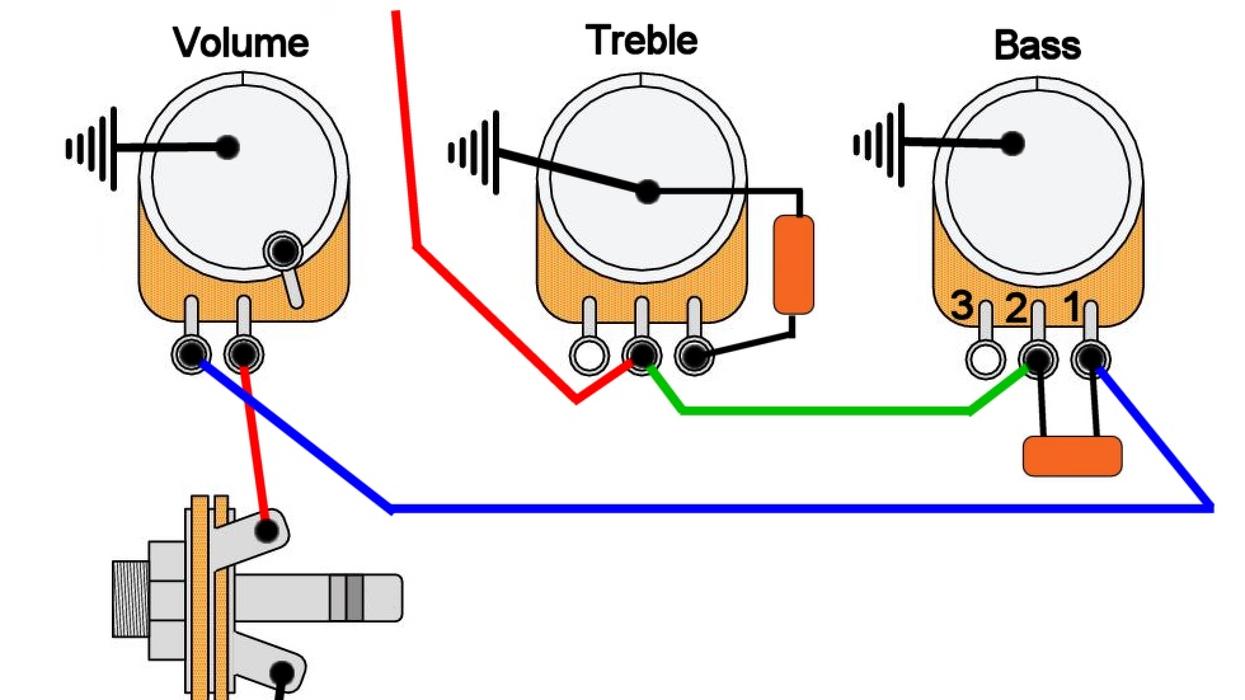

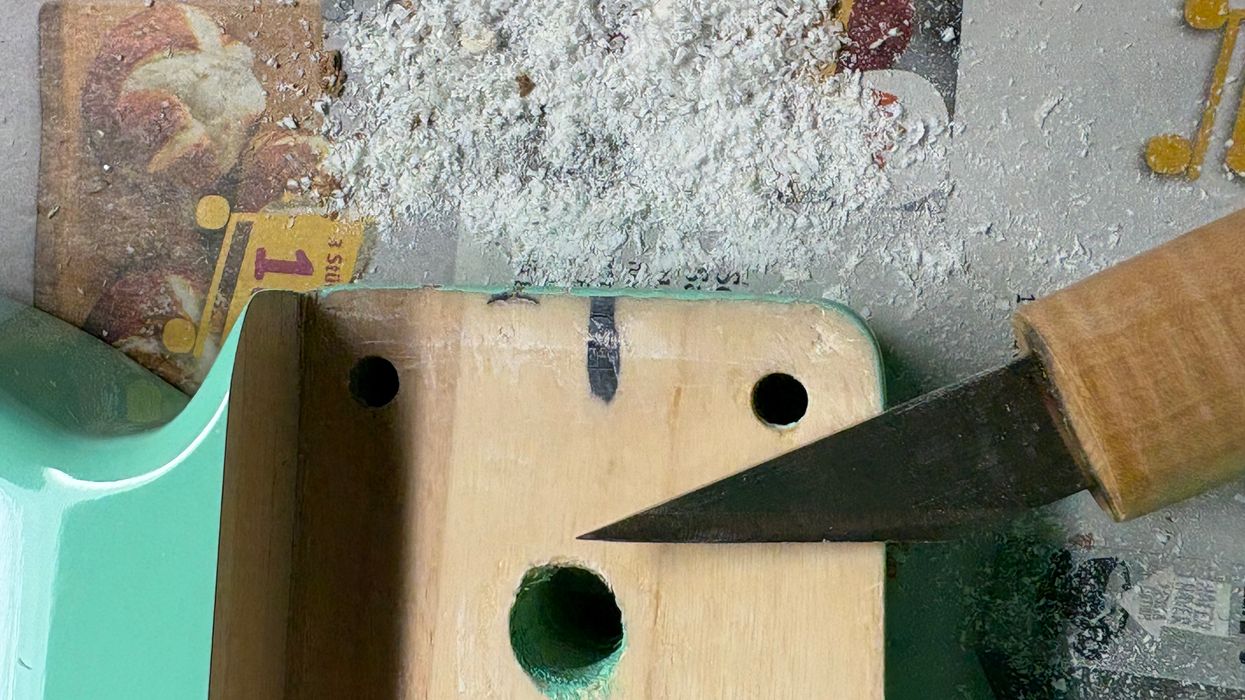
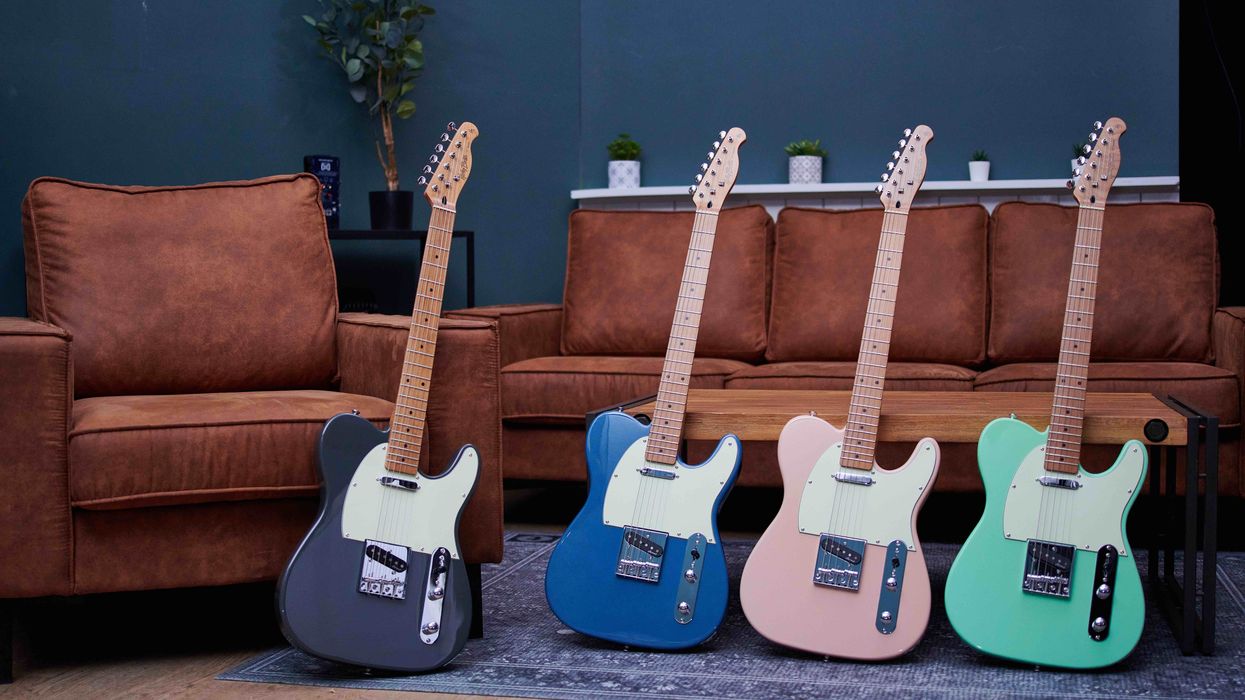
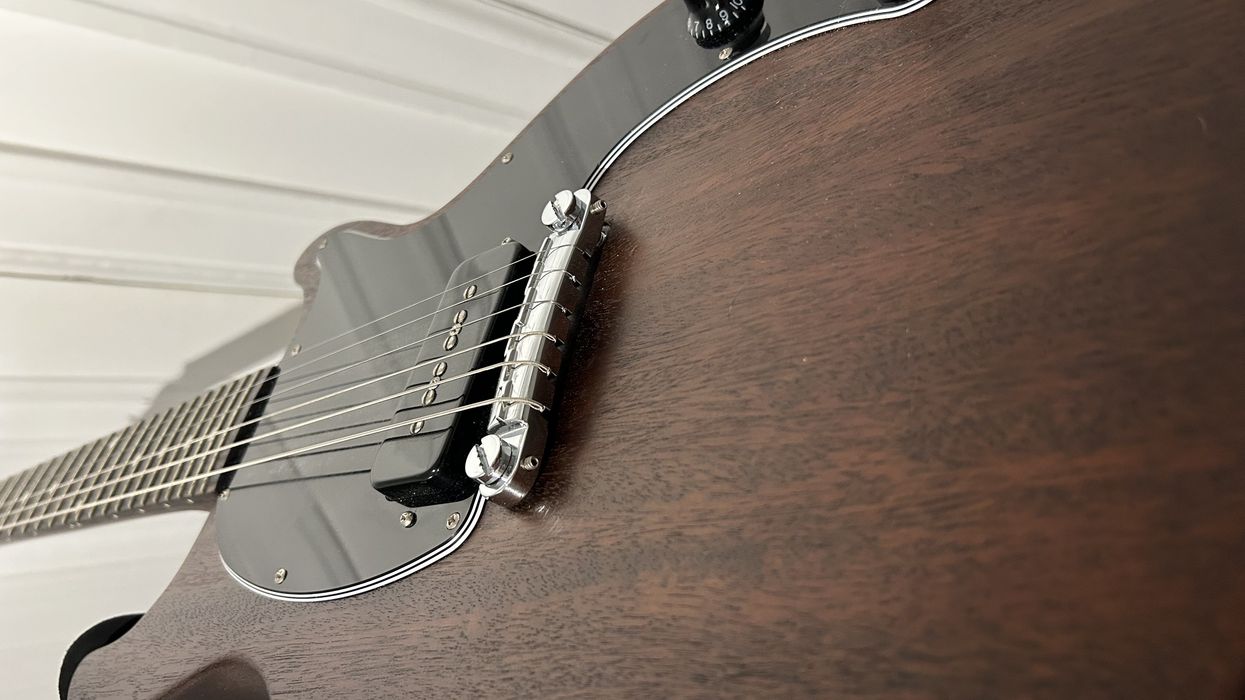
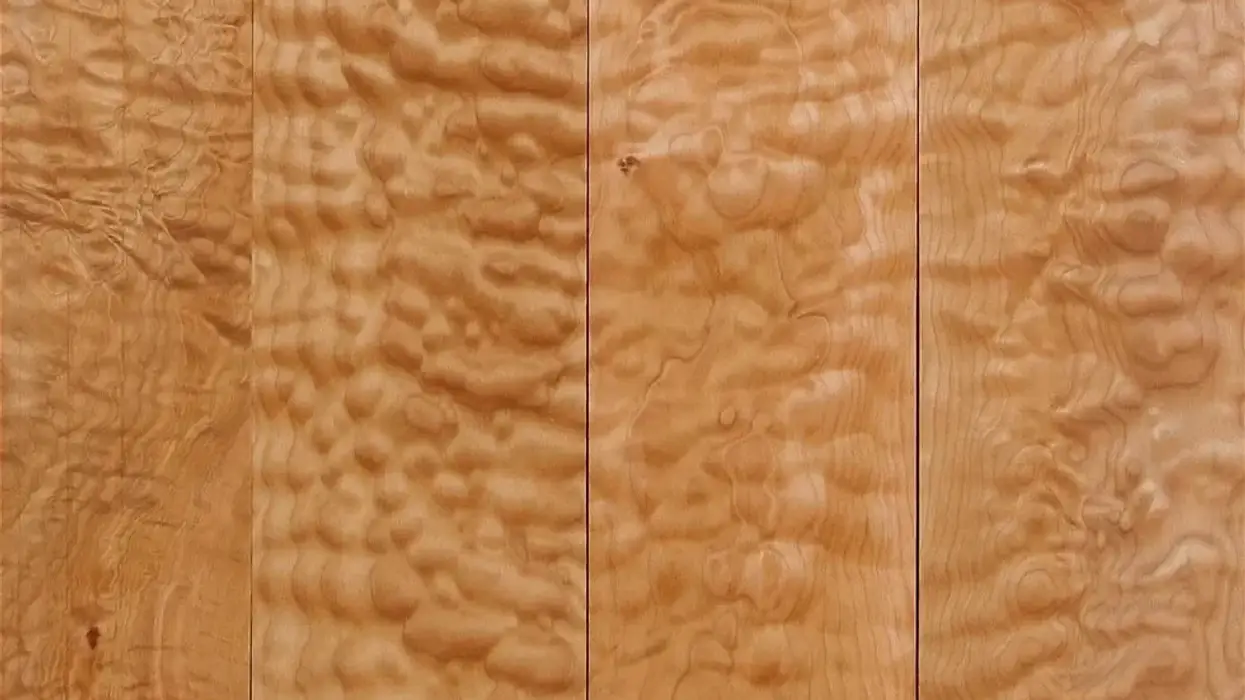

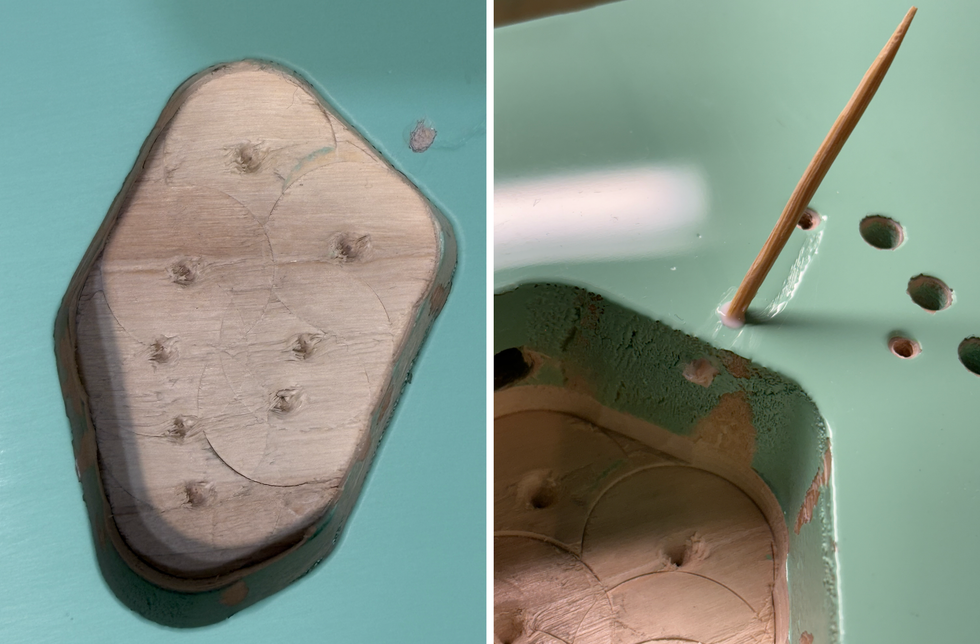
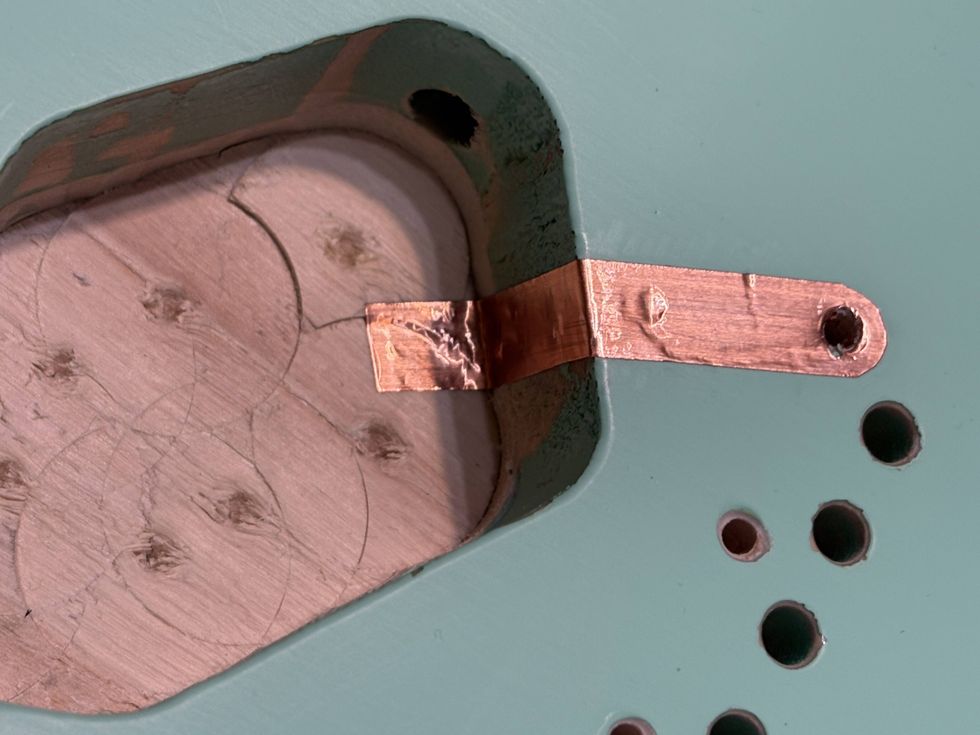
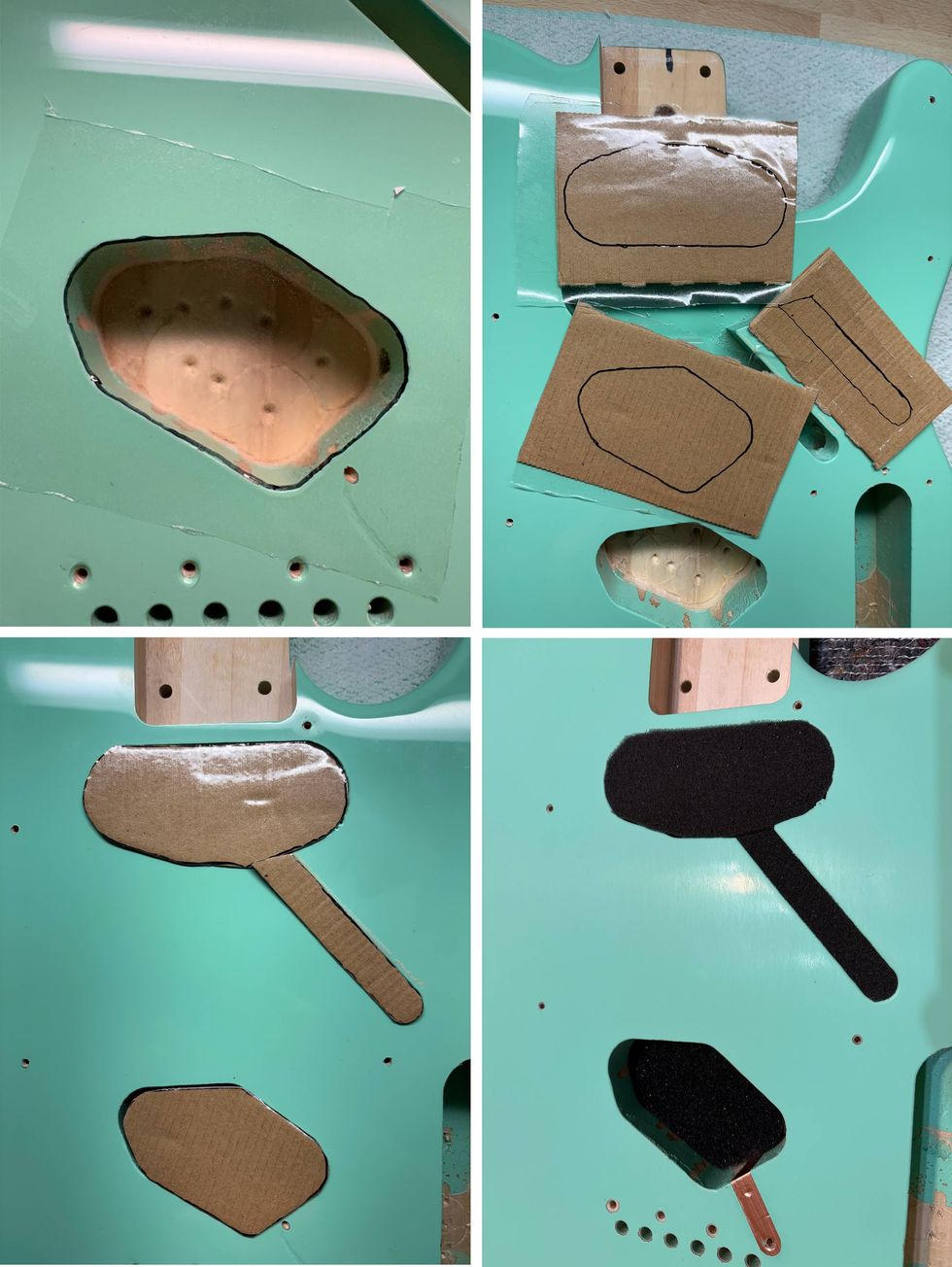
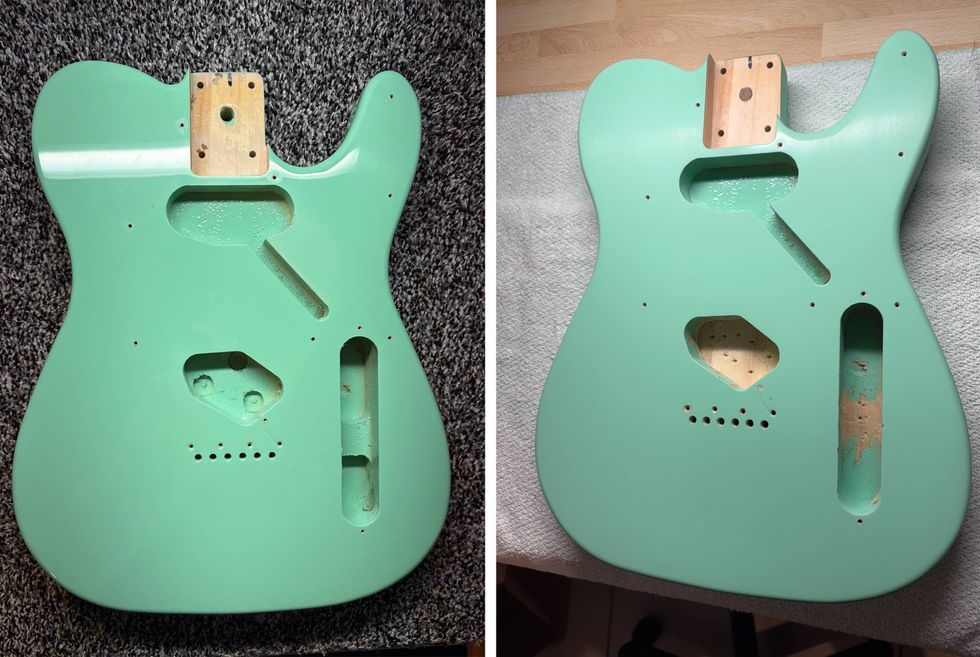



![Rig Rundown: Russian Circles’ Mike Sullivan [2025]](https://www.premierguitar.com/media-library/youtube.jpg?id=62303631&width=1245&height=700&quality=70&coordinates=0%2C0%2C0%2C0)


